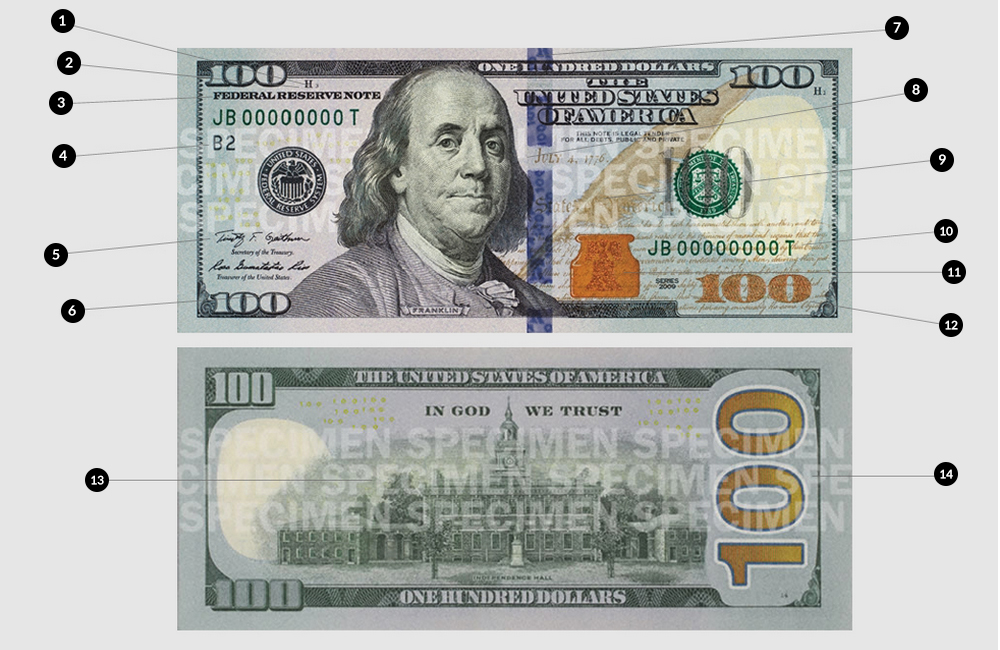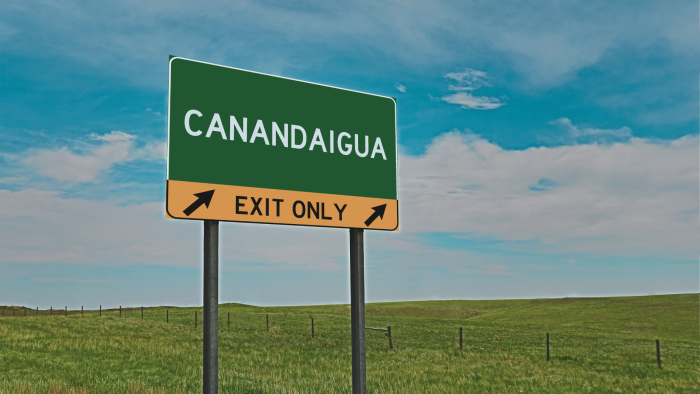In each edition of “Decoded” we take a recognizable item and break it down by explaining what everything on it means. In this installment we take a look at the new, soon-to-be-released $100 bill. Take a look at some of the new features you’ll see when it goes into circulation by the end of the year.
- 1. Note Number Position : (*H3) Indicates which section of the plate the bill was printed on.
- 2. FW Indicator: If an “F.W.” is present, it indicates the bill was printed in Fort Worth, Texas. If there is no “F.W.” it was printed in Washington DC.
- 3. Federal Reserve Note: Banknotes used in the United States.
- 4. Federal Reserve Indicator: The Federal Reserve Indicator signifies the issuing bank. In this case, “B2” happens to be the code for New York.
- 5. Timothy Geithner’s Signature: Since the bill was designed before Jacob Lew took office earlier this year, the notes feature Tim Geithner’s signature.
- 6. Ben Franklin’s Jacket Collar: In tiny print is “United States of America.”
- 7. Blue Ribbon: This 3D ribbon is an added security feature to the bill. It’s actually woven into the paper and not printed on it. When you tilt the note, the bells inside the strip turn to 100s and back again as you move it. Current counterfeiting techniques make duplicating the ribbon almost impossible.
- 8. Ben Franklin: Despite not being a president, Ben Franklin has appeared on the $100 bill since 1914. Ben Franklin and Alexander Hamilton are the only two non-presidents on bills that are currently printed.
- 9. Symbols of Freedom: To the right of the image of Benjamin Franklin are phrases from the Declaration of Independence and a copper quill that is supposed to look like the one the Founding Fathers used to sign the document.
- 10. Serial Numbers: The serial number is still printed twice on each note in the same locations as before.
- 11. Bell in Inkwell: Like other aspects of the bill, the bell inside the inkwell will turn from copper to green as you tilt the note. This, along with the other movement features, make the bill difficult to counterfeit.
- 12. 100: Like the bell in the inkwell, the “100” on the bottom right of each bill will change from copper to green as you move the bill back-and-forth.
- 13. Independence Hall: The new $100 bill will feature the back of Independence Hall instead of the front in an effort to make old counterfeiting measure obsolete
- 14. Large 100: The new colorful and large “100” on the back of the bill was designed to help people with visual impairments distinguish it from other notes.




